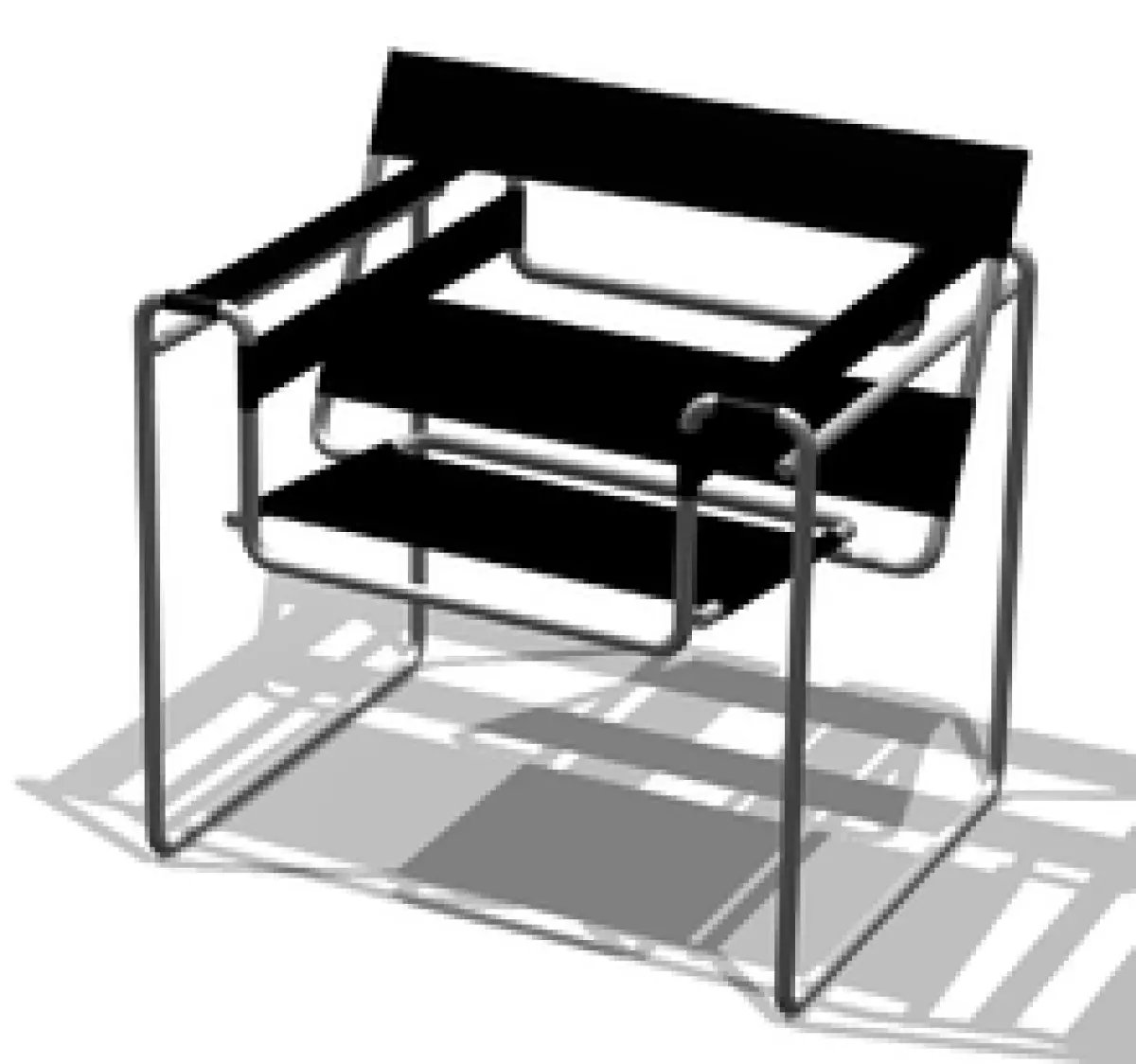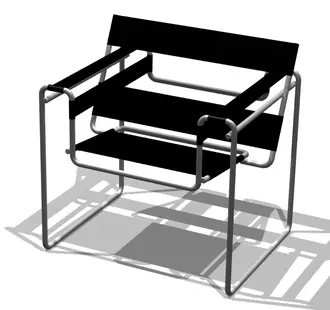Marcel Breuer's Innovative Creation
 Wassily Chair by Marcel Breuer
Wassily Chair by Marcel Breuer
The Wassily Chair, also known as the Model B3 chair, is a true icon of modern design. Designed by Marcel Breuer during his time at the Bauhaus in Dessau, Germany, this chair revolutionized the modern interior with its innovative use of materials and striking aesthetic.
A Chair with a Fascinating History
Contrary to popular belief, the Wassily Chair was not originally created for the famous non-objective painter Wassily Kandinsky. It was Breuer's remarkable design that caught Kandinsky's eye, leading to the fabrication of a duplicate for his personal quarters. It was only years later, when the chair was reintroduced by Italian manufacturer Gavina, that it became associated with Kandinsky's name.
The Visionary Designer: Marcel Breuer
 Marcel Breuer "Faltsessel," Chair D4 (1927), from the Bauhaus Dessau
Marcel Breuer "Faltsessel," Chair D4 (1927), from the Bauhaus Dessau
Marcel Breuer, a protégé of Bauhaus founder Walter Gropius, was a champion of the modern movement. His remarkable talents extended to both architecture and furniture design. While at the Bauhaus, Breuer created a groundbreaking collection of tubular-steel furniture that was inspired by bicycle construction techniques and crafted using the methods of local plumbers. His visionary designs, including the Wassily Chair, remain iconic representations of the modern furniture movement.
The Evolution of the Wassily Chair
The chair, initially known as Model B3, was first manufactured in the late 1920s by Thonet, a renowned German-Austrian furniture manufacturer. Available in both folding and non-folding versions, this early rendition featured fabric straps that were pulled taut using springs. Margaretha Reichardt, a student at the Bauhaus weaving workshop, improved the quality of the fabric, creating a strong and shiny waxed-cotton thread called "Eisengarn." This enhanced fabric was used for the chair's straps, adding durability and elegance to the design.
From Fabric to Leather: The Gavina Era
After World War II, Italian manufacturer Gavina acquired the license for the Wassily Chair and other Breuer designs previously sold by Standard-Möbel, Lengyel & Co. It was during this time that the chair underwent a significant transformation. Black leather straps replaced the fabric, becoming the hallmark of the iconic Wassily version that we recognize today. However, Gavina continued to offer the fabric version as well. In 1968, Knoll acquired the Gavina Group, bringing Marcel Breuer's designs together under the Knoll catalog.
A Masterpiece of Material and Manufacturing
The Wassily Chair's innovative use of bent tubular steel and Eisengarn material made it a true masterpiece of modern furniture design. Breuer's inspiration came from the lightweight frame of his first bicycle, which led him to experiment with using tubular steel in furniture. This design was made possible by the advancements in seamless pipe production by German steel manufacturer Mannesmann. Previously, welded seams would collapse when the tubing was bent, making this innovative approach unachievable.
A Timeless Design Classic
 Wassily Chairs in the Bauhaus of Dessau
Wassily Chairs in the Bauhaus of Dessau
Since its introduction in the late 1920s, the Wassily Chair, a design classic, has been mass-produced and remains in continuous production to this day. While the patent designs have expired, Knoll of New York City retains the trademark name rights to the design. Reproductions are available worldwide, marketed under various names, allowing design enthusiasts to own a piece of this iconic furniture.
In Conclusion
The Wassily Chair, an embodiment of Marcel Breuer's visionary design philosophy, stands as a testament to the Bauhaus objective of reconciling art and industry. Its distinctive aesthetic, innovative use of materials, and timeless appeal make it a cherished piece of furniture that continues to captivate design enthusiasts worldwide.

















